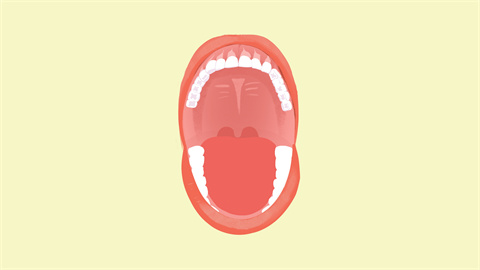What are the symptoms of oral lichen planus, and how is it treated?
Common symptoms of oral lichen planus include white reticular patches, mucosal redness and congestion, localized pain or discomfort, mucosal erosion and ulcers, and associated skin lesions. Treatment may involve topical medications, systemic drugs, physical therapies, psychological adjustment, and elimination of triggering factors, with specific plans tailored according to disease severity. If symptoms persistently worsen or erosions fail to heal over time, prompt medical consultation is recommended.
I. Typical Symptoms of Oral Lichen Planus
1. White Reticular Striae: White, interlacing net-like or linear patterns appear on the oral mucosa (such as buccal mucosa or dorsal tongue). These striae are clearly defined and usually symmetrically distributed, representing a characteristic feature of the condition.
2. Mucosal Redness and Congestion: The mucosa surrounding the white striae may become congested and reddened, with some areas showing pale red patches. Though typically not painful upon touch, these changes are visually distinct from normal mucosa.
3. Localized Pain or Discomfort: When irritated—such as by consuming spicy foods—the affected mucosa may cause a burning sensation or discomfort. Pain tends to be more pronounced in areas with dense striae.
4. Mucosal Erosion and Ulceration: In more severe cases, the mucosa may develop erosions or ulcers covered with a yellowish pseudomembrane. These lesions are often intensely painful, interfering with eating and speaking. Healing may result in post-inflammatory pigmentation.
5. Associated Skin Lesions: Some patients also develop skin manifestations, such as shiny, purple-red polygonal papules on the limbs or trunk, often accompanied by mild itching.

II. Treatment Approaches for Oral Lichen Planus
1. Topical Medications: Under medical guidance, use mouth rinses, ointments, or gels applied directly to affected areas to reduce inflammation, relieve pain, and promote mucosal healing. This approach is suitable for patients with mild to moderate symptoms.
p>2. Systemic Medications: For severe cases or those accompanied by widespread skin involvement, oral medications may be prescribed to modulate the immune response and control inflammation. These must be taken strictly as directed, with regular monitoring of bodily responses.3. Physical Therapies: For patients who respond poorly to medication, physical treatments such as laser therapy or cryotherapy can be used to remove diseased tissue, alleviate symptoms, promote mucosal healing, and reduce recurrence.
4. Psychological Adjustment: Chronic stress or emotional tension may exacerbate the condition. Managing anxiety and depression through counseling or relaxation techniques can help stabilize the disease and reduce symptom flare-ups.
5. Elimination of Triggers: Avoid spicy, irritating, or excessively hot foods; discontinue medications or toothpastes that may trigger the condition; quit smoking and alcohol consumption to minimize irritation to the oral mucosa and support treatment efficacy.
In daily life, maintain good oral hygiene by using a soft-bristled toothbrush and mild toothpaste. Chew food slowly and thoroughly during meals to avoid mucosal trauma. Increase intake of fresh fruits and vegetables rich in vitamins, and maintain a regular lifestyle to support overall disease stability.




